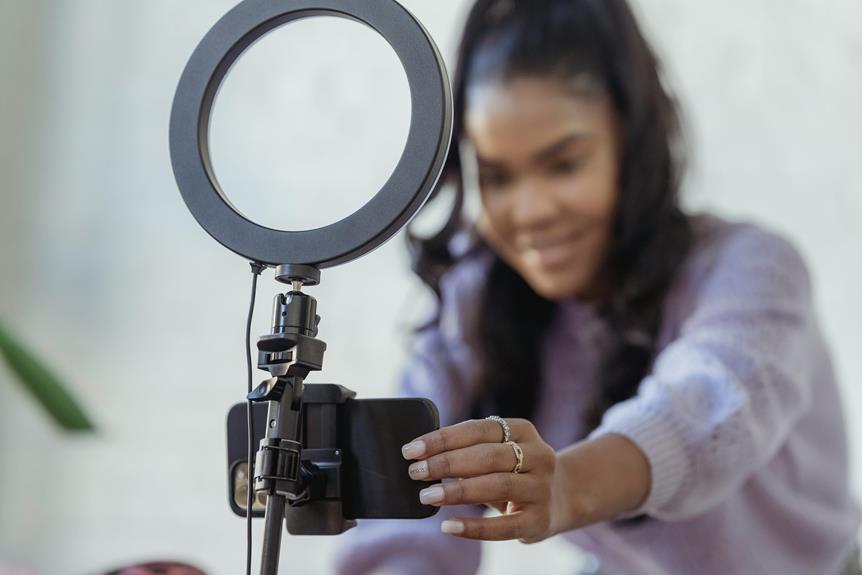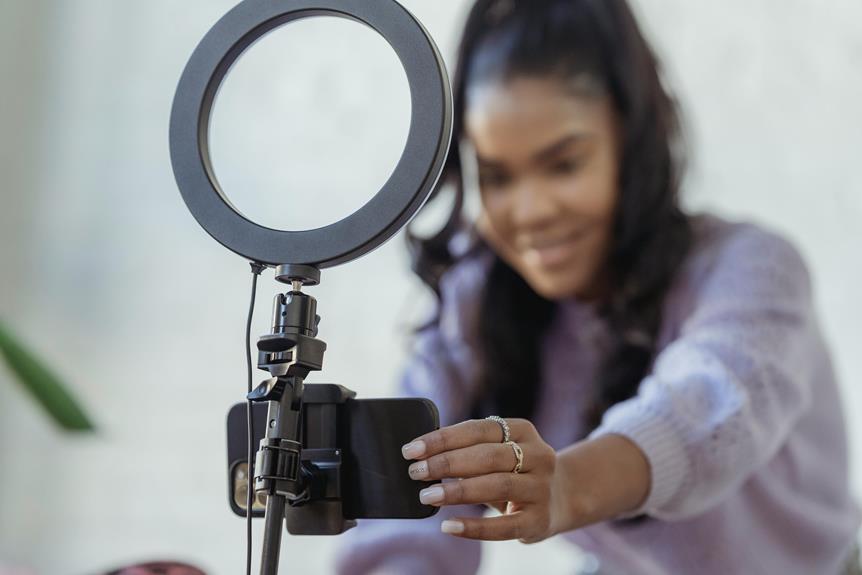Think running a podcast with two mics is a tech nightmare? Don't worry, you're not alone. We've crafted this ultimate guide to simplify the dual-microphone setup for you.
From picking the right mics, establishing your workspace, achieving sound balance, to troubleshooting common issues – we've got you covered.
So, let's dive right in and you'll be mastering your two-mic podcast setup in no time.
Key Takeaways
- Dual-microphone setup using cardioid mics reduces unwanted background noise
- Understanding microphone polarity effects is crucial for optimal sound pickup
- Phantom power is necessary to power condenser microphones in a dual-microphone setup
- Choosing the right microphones based on recording environment and budget is essential for quality and durability.
Understanding Dual-Microphone Setup
In your journey to create quality podcasts, understanding the dual-microphone setup is a crucial skill you'll need to master.
The first concept you'll have to grasp is microphone polarity effects. This refers to the direction from which a microphone picks up sound. A dual-microphone setup, typically using cardioid mics, can help reduce unwanted background noise, ensuring your voice is loud and clear.
The second key element is understanding the basics of phantom power. This is the DC voltage, usually 48V, that's needed to power condenser microphones. It's sent through the same cables that carry the audio, reducing the need for additional power sources. So, it's a practical, space-saving solution.
Mastering these technical aspects will enhance your podcast's sound quality and professionalism.
Choosing the Right Microphones
When you're picking mics for your dual-microphone setup, it's essential to consider your recording environment and your budget.
The acoustics of your space play a crucial role in determining the type of microphone that will deliver the best quality sound. For instance, condenser mics are great for studio environments, while dynamic mics better suit live or noisy settings due to their durability.
Microphone durability is a key factor, especially if you're planning to move around with your equipment. A sturdy build can withstand drops and shocks, ensuring your investment lasts longer.
Budget considerations are also vital. While pricier mics often offer superior sound quality, there are affordable options that deliver decent performance. Always balance cost with your specific needs and quality expectations.
Setting Up Your Workspace
After securing your ideal microphones, it's time to focus on your workspace setup, ensuring it complements your equipment's capabilities and enhances your podcast's sound quality. Consider these factors:
- Workspace ergonomics: Arrange your equipment in a way that's comfortable and efficient. This includes the height of your chair and table, distance from the microphone, and the positioning of your computer or notes.
- Lighting considerations: Good lighting is essential for video podcasts and can also influence your mood and energy during recordings.
- Soundproofing: Minimize background noise by using items like foam panels or heavy curtains.
- Ambience: Personalize your space to inspire creativity.
- Ease of use: Organize your space to access your equipment easily.
Next, let's dive into perfecting sound balance.
Perfecting Sound Balance
Achieving impeccable sound balance is crucial for your podcast, and it's something you'll need to master when setting up your dual-microphone system.
This involves fine-tuning your audio equalization techniques and surround sound balancing. When working with audio equalization, you're essentially adjusting the balance between frequency components. You may need to amplify certain frequencies or reduce others to achieve a balanced, clear sound.
Surround sound balancing ensures that your listeners experience a consistent, immersive audio environment. It's about making sure the audio is evenly distributed, creating a sense of space and depth.
With careful adjustments and regular sound checks, you'll create a balanced, professional audio output.
Now that we've covered sound balance, let's move onto troubleshooting common issues.
Troubleshooting Common Issues
Now that you've mastered sound balance, let's tackle some common problems you might encounter when setting up your dual-microphone system.
Issue diagnosis is vital in pinpointing where the problem lies, enabling effective solution implementation. Here are five common issues:
- Microphone not detected: Ensure your device is properly connected and recognized by your system. Check your USB or XLR cables for any defects.
- Unwanted noise: This might be due to mic location or environmental factors. Adjust your mic position or reduce background noise.
- Audio clipping: Reduce the input volume on your audio interface to avoid distortion.
- Imbalanced audio: Revisit your sound balance techniques to ensure equal audio input from both mics.
- Echo issues: This is usually a room acoustics problem. Try adjusting your room setup or use a pop filter.
Frequently Asked Questions
What Are the Best Podcast Hosting Platforms for a Dual-Microphone Setup?
For your dual-microphone setup, consider platforms like Libsyn, Podbean, or Spreaker. They'll support your microphone pairing strategies and aid in selecting podcast themes. Remember, it's all about quality and ease of use.
How Can You Manage the Audio Files From Both Microphones During Post-Production Editing?
Navigating the sea of audio synchronization challenges, you'll need to merge and edit your files. Use noise reduction techniques in your editing software to clean up any discrepancies or background sounds. Be patient, it's a process.
How Can You Incorporate Guest Speakers Into a Dual-Microphone Setup?
Incorporating guest speakers into a dual-mic setup involves careful guest selection strategies. You'll need to design an interview layout that accommodates the extra audio input, ensuring clear sound quality for all participants.
What Are Some Tips for Maintaining Your Microphones to Ensure Their Longevity?
You've got to maintain your mics for long-term use. Learn some microphone cleaning techniques, like gentle dusting and careful sanitizing. Invest in protective gear like dust covers and padded storage cases; they're worth it!
Are There Any Specific Etiquette Rules or Best Practices for Speaking When Using a Dual-Microphone Setup?
Yes, there are. You'll need to master mic positioning techniques, ensuring both mics capture your voice equally. Also, incorporate soundproofing strategies to minimize background noise. Always speak clearly and don't overlap with your co-host.
Conclusion
So, you've navigated the world of dual-microphone setup. You've chosen your mics, established your workspace, mastered sound balance, and tackled common problems.
But remember, the journey doesn't end here. There's always more to learn, more to tweak, more to perfect. Keep experimenting, keep adjusting. Your perfect podcast sound is out there and with a bit of tenacity, you'll find it.
Ready for the next challenge? Keep tuning in.
Until then, happy podcasting.



